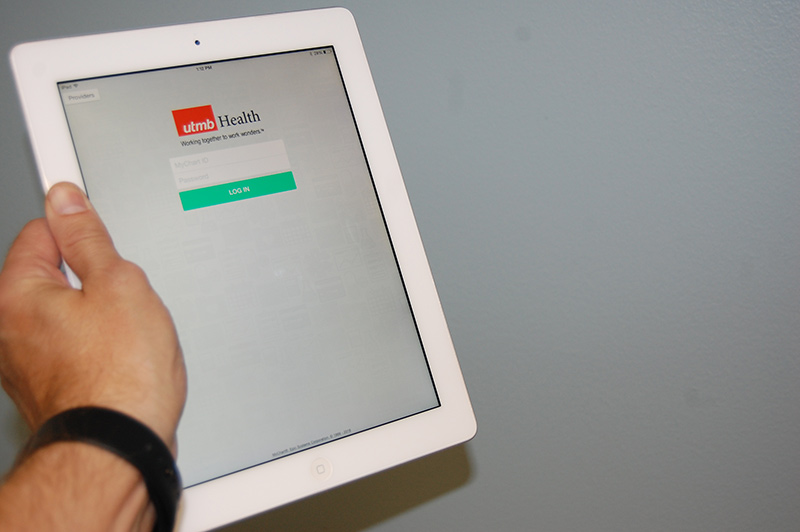Pilot program helps Ambulatory Care Management team reduce hospital readmissions

UTMB’S AMBULATORY CARE MANAGEMENT TEAM is always looking for ways to better serve patients.
So when Information Services approached the team about participating in a video visits pilot program, they knew this was something that could benefit patients—especially those who live in rural areas.
Video visits are a form of telehealth that are conducted online. For a video visit, Care managers are issued an iPad to conduct the visit, and patients are then instructed to activate their MyChart on their smart device or a computer that is connected to WiFi and equipped with a camera. A video visit appointment is scheduled in MyChart, and when it is time for the appointment, the care manager logs in and launches the video.
“This allows the care manager and patient to have a face-to-face visit via video,” said Toni Shultis, nurse manager in Ambulatory Care Management.
This type of telehealth allows the patient to continue receiving the care and regular supervision they need after they have been discharged from the hospital and are in the home setting. The remote contact can help prevent a potential readmission to the hospital.
“Video visits have proven to be particularly helpful in cases where the patient has a wound, as an image can be captured and uploaded into the patient’s medical record in Epic,” she said. Care managers document any details and pertinent findings during the video visits.
“A video visit is more personal than a phone call and more convenient than a home visit, particularly if the patient lives in a rural area,” Shultis said.
Last November, two of the Ambulatory Care Management team’s care managers—Mary Simon, a community health care manager who covers Brazoria County, and Stacy Avina, a care manager with the transitional care team—were recruited to participate in the pilot program. The 90-day video visit pilot started in April and ended in June.
Patients with chronic or complex diseases or conditions who consented to the program, had an active MyChart account and access to a smart device were selected for the pilot.
One of the patients who participated required specific procedures and regular wound care at home, something that was overwhelming to the patient’s spouse.
The care manager conducted several video visits with the couple, which enabled nurse practitioners and physician assistants to review uploaded images in Epic.
Overall, the program was considered a success, according to the nurse practitioner and physician assistant.
“The patient and family were anxious about home care in the beginning, but because of this program, we provided them the reassurance and confidence they needed,” Shultis said.
“We believe that is ultimately what kept the patient from returning to the hospital.”